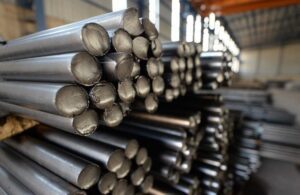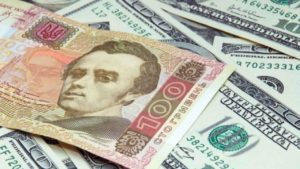
In the first ten days of October, an upward price trend continued on the regional iron markets under the influence of the rise in prices for scrap metal and iron ore raw materials, Ukrainian Industry Expertise (UEX) said in a press release on Monday.
At the same time, in the U.S. market, consumers are under pressure from a deficit and a rapid rise in prices for high-quality scrap grades, so buyers are forced to return to contracting cast iron. Also, most of them are trying to accumulate sufficient stocks for the winter, buying large quantities without waiting for the rise in prices for raw materials. Despite the growth in demand and prices, producers of raw materials are in no hurry to unload warehouses, as they expect to maintain an upward trend in the coming month. As a result, cast iron quotes increased to $600-610 per tonne CIF.
A significant rise in the cost of flat products and a shortage of material on the Italian domestic market pushed the quotes for cast iron to rise to $590-595 per tonne CIF. The factories are experiencing a supply deficit driven by an increase in cast iron consumption in Turkey and the United States.
According to forecasts of the UEX analyst Yuriy Dobrovolsky, in the coming weeks the quotations of cast iron will increase amid the rising cost of scrap metal and the exhaustion of stocks at large importers. The prices will also be supported by a low supply from the main suppliers from Russia and Brazil, as well as the active creation of winter stocks by the main importers in Turkey and the Asian region.
In the second half of October, scrap prices continued to rise rapidly due to the catastrophic shortage of raw materials and the active formation of winter reserves by large importers of scrap.
In Turkey, deals are being made in all directions, with buyers willingly making concessions to suppliers, fearing that the upward trend will continue in the near future. The problem remains with the prompt supply of material for the current production programs amid weak internal scrap procurement. As a result, at the beginning of the second decade of October, quotations of scrap HMS 1 & 2 (80:20) rose to $500 per tonne CIF, which is $25 per tonne more than a week earlier. Crushed raw materials are traded by $10 per tonne more – at the level of $510-515 per tonne CIF.
In the Asian market, scrap prices are also moving rapidly upward on the back of growing demand for long products and a lack of supply in the domestic market. Japanese scrap suppliers noted an increasing demand for the material in the domestic market, which limits the volume of supplies to foreign destinations. As a result, scrap HMS1 rose in price to $490 per tonne CIF.
UEX analysts predict in the near future an increase in the price of scrap metal in connection with the replenishment of stocks by the largest buyers and the creation of reserves for the winter period. The quotes will also be supported by the dwindling supply of material from American and European suppliers, who feel a shortage of scrap in the domestic markets of their countries.

Ernst & Young is waiting for a spike in proposals to insure cybersecurity risks in Ukraine in 2019, according to a study by Ernst & Young Global Limited posted by the Ukrainian representative office of the company.
“The high level of damage to business from cybercrime around the world encourages companies to look for ways to manage these risks from the outside. One of the available options is to insure cyber risks, so similar offers from insurance companies are the expected trend of 2019 in Ukraine,” Senior Manager of information technology and IT risk management department of EY in Ukraine Dmytro Lazuchenkov said.
According to EY Global Information Security Survey 2018–2019, Ukrainian businesses are still characterized by the active migration of large Enterprise IT solutions to cloud services and the performance of business-critical operations in public “clouds.”
In a highly competitive environment, cloud solution providers are trying to reduce costs by reducing investment in technical tools and staff skills that are necessary to ensure the security of a cloud solution. This leads to the fact that cloud environments are becoming more susceptible to attacks by cybercriminals,” the company said in a press release.
EY said that the state-run institutions of Ukraine also should not forget about countering cyber threats.
According to EY Global Information Security Survey 2018-2019, vulnerabilities with the most increased risk exposure over the past 12 months were careless/unaware employees (34%), Outdated security controls (26%), unauthorized access (13%), and related to cloud-computing use (10%).
Most organizations (82%) are not sure if they successfully identify cybersecurity incidents. Among organizations suffered from incidents over the past 12 months, less than one third (31%) say that the incident was revealed by the cybersecurity service of the company.
EY said that 60% of organizations say that the person directly responsible for information security is not a board member. Only 18% of organizations say that information security fully influences business strategy plans on a regular basis.

The continuation of the trend towards the strengthening of the hryvnia that emerged at the beginning of the year in recent weeks has been maintained by a stable supply of foreign currency against the backdrop of a favorable external environment, according to the website of the National Bank of Ukraine (NBU).
“The situation in the foreign exchange market was shaped by the following factors: a favorable external environment for Ukrainian exports, the forthcoming payment of annual taxes to the national budget, which stimulates businesses to sell foreign currency more actively, a weak growth of imports of goods and a low repatriation of dividends in foreign currency abroad, as well as net sales of foreign currency by the population,” the report says.
At the same time, according to the NBU, the inflow of foreign capital into government securities, which has been observed since mid-January, has now slowed down and does not play a significant role in strengthening the hryvnia exchange rate, the National Bank added.
In general, the NBU notes that fluctuations in the direction of strengthening that have been observed in recent weeks is a healthy market reaction to constant changes in the economic situation: under the influence of changes in the supply and demand balance, the national currency can both strengthen and weaken. In such circumstances, short-term forecasting for the hryvnia exchange rate is difficult.